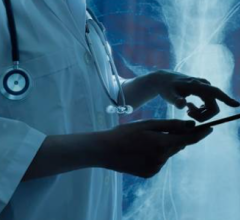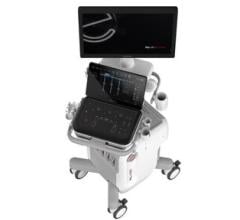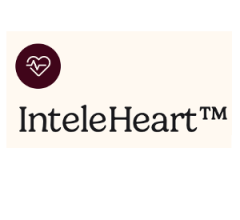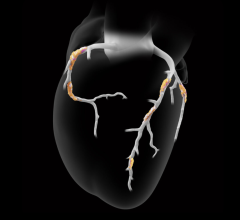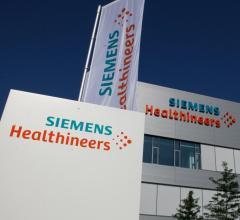
The GE Healthcare Vsan Air wireless transducer point-of-care-ultrasound system will be used in combination with UltraSight artificial intelligence technology to monitor an astronaut's heart during Rakia space mission. The research will be used to determine the possible side effects of long-duration maned flights to Mars.
October 4, 2021 – UltraSight, a digital health company developing artificial intelligence (AI) enabled cardiac imaging, announced a new collaboration with GE Healthcare to conduct a cardiac ultrasound study aboard the Axiom Rakia space mission. The company also announced the successful completion of preliminary design review (PDR) for its cardiac point-of-care-ultrasound (POCUS).
During the study, using a combination of UltraSight's real-time AI guidance software and GE Healthcare’s handheld GE Vscan Air, the high performance, wireless pocket-sized ultrasound will record images of an astronaut’s heart in microgravity. This study will help scientists get a better understanding on the potential impacts on the heart on long-duration space flights. This includes setting up a based on the moon and manned flights to mars that are in the planning stages.
The goal of this study is to demonstrate how cardiac ultrasound can be acquired anywhere, and how AI guidance has the potential to enable successful scanning with limited training. During the mission, Lt. Col. Eytan Stibbe, the first Israeli flying to the International Space Station, will use the Vscan Air ultrasound device with UltraSight AI guidance and take his own cardiac images, independent of trained medical professionals or ground mission control.
The vendor said the outcomes of this study will show how cardiac POCUS can be used, especially in underserved communities where access to echocardiography labs and large medical systems is limited.
“Easy access to cardiac diagnostic imaging and a small and durable, wireless ultrasound device that can perform under arduous space conditions would be hugely important – it could allow the monitoring of space crews’ health and provide critical information on whether immediate intervention is necessary,” said Davidi Vortman, CEO of UltraSight. “Vscan Air fits the bill. We are excited to collaborate with GE Healthcare and lead a new wave of medical innovation in space.”
“Space agencies are looking for an ultrasound solution with the features provided by GE Healthcare and UltraSight not only for the international space station, but to also assist with upcoming missions including Artemis to the moon, and soon after to Mars,” said Eran Schenker, M.D., chief innovation medical officer, Israeli Aerospace Medicine Institute (IAMI). “In fact, the mission to Mars, which will have significant communication challenges and delays, will require the rethinking of telemedicine. Real-time AI guidance will be critical in enabling the crew to obtain cardiac images without relying on mission control on Earth,” he concluded.
GE Healthcare pioneered the first color pocket-sized ultrasound, Vscan, in 2010 and has since continued to revolutionize the way clinicians use handheld ultrasound to see patients. To date, there are over 30,000 Vscan Family systems in the pockets of clinicians, impacting the care of more than 50 million patients worldwide. The Vscan Air, launched earlier this year, increases access to precise care, helping improve workflow efficiencies and patient outcomes through dual-probe whole-body scanning capabilities and a user-friendly interface.
“The upcoming space mission aims to demonstrate the added value AI could have for Point of Care Ultrasound in providing flexible and timely access to diagnostic information anywhere and anytime,” said James Hurley, general manager, handheld ultrasound at GE Healthcare. “From the farthest place you can imagine, which is space, to the primary and acute care settings in local communities worldwide, this technology plays a critical role in providing patients with accurate and timely diagnosis of cardiac conditions and other diseases.,
The Rakia Preliminary Design Review was completed after the technology was presented to the Scientific Program Committee, Israeli Space Authority, Ramon Foundation and to Col. Stibbe. Its successful completion is a key milestone in the process of any project intended for space missions, as it identifies potential issues and ensures the design will help meet all space mission requirements.
After meeting UltraSight’s medical team and being introduced to the technology, Col. Stibbe said, “I am happy to play a role in testing medical innovation that has the potential to improve patient access to advanced medical care around the world. Even in 2021, too many people still do not have access to advanced healthcare. This is a step in the right direction.”
In May 2021, UltraSight was selected by the Israel Space Agency to conduct the cardiac study aboard the Rakia space mission. The company chose GE Healthcare as a partner because of its R&D expertise and the high image quality of the Vscan Air.
UltraSight is a partner in GE Healthcare’s Edison Developer Program, a dynamic ecosystem which helps innovators deliver advanced healthcare applications, integrate products, and drive commercial growth.
This is not the first time a GE Healthcare ultrasound device was used in space. In July 2011, GE Healthcare’s Vivid q cardiovascular ultrasound system was delivered to the International Space Station (ISS) on the Atlantis’ final space shuttle flight.
The UltraSight AI guidance software is currently pending approval for medical use in the U.S. and European markets.
For more information: www.ultrasight.com

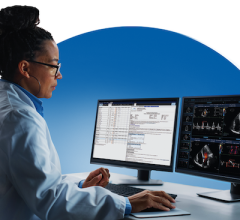
 December 09, 2025
December 09, 2025 

